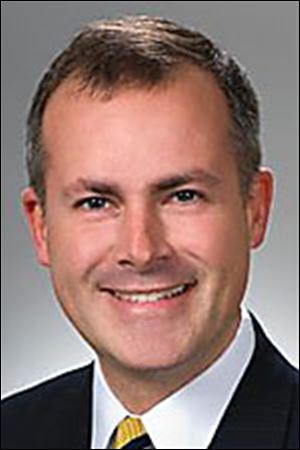
GUEST COLUMN
Ohio’s growing opioid epidemic hurts families
6/8/2014
Sprague
Ohioans are increasingly aware of the detrimental effects of addiction on people and families in our state. Although illegal drugs such as cocaine and heroin remain serious problems, a much more common substance has risen to the top of the list of concerns.
Prescription opioids are responsible for more deaths in Ohio than heroin and cocaine combined, according to the U.S. Centers for Disease Control. Their impact is best illustrated not by statistics, but by the stories of lives that have been destroyed by rampant drug use.
I heard from a mother whose son, Cole, died after taking just one methadone pill. He got it from a close friend and fellow athlete at the high school they attended. It came from the closet of a deceased hospice patient.
After Cole had trouble breathing, he was taken to an emergency room. A few hours later, he stopped breathing. The single pill shut down Cole’s respiratory system, causing him to overdose.
Cole was a good kid with great potential. He made one mistake. It cost him his life.
Stories like this are far too common in Ohio. Without proper oversight and relentless efforts to fight this epidemic, they will continue to be told.
Last year, I chaired a bipartisan study committee that traveled to four counties, including Lucas County, to learn more about this issue and how to address it. We heard from 81 witnesses during more than 16 hours of testimony. They provided chilling details about how severe the problem has become.
Often, people become hooked after family members and friends give them pills that were sitting in their medicine cabinets. In other cases, a valid medical prescription leads to addiction.
In Ohio, a state of 11.5 million people, 822 million doses of prescription opioids were dispensed last year. That's more than 70 doses for every man, woman, and child in the state.
Over the past decade, the number of prescription doses increased tenfold. Several factors have contributed to the robust increase in opioid prescriptions.
In 1998, the General Assembly passed legislation that effectively allowed Ohio doctors to prescribe opioids for pain under a broader range of conditions. About the same time, the federal government declared pain a vital sign, and the U.S. Food and Drug Administration approved several powerful opioid medications for sale in the marketplace. All of these actions had a reaction.
Ohioans wonder why heroin has moved into our suburbs and rural areas. Before prescription opioids became so widespread, heroin use was more contained within our major cities.
But as opioid prescriptions increase, so do addictions and overdose deaths. You’re more likely to die from a drug overdose in Ohio than from a car accident.
Prescription opioids have created a bridge over the moat that used to separate heroin from potential users. Heroin’s almost identical chemical structure, lower price on the street, and strength make it a drug of choice for addicts who get hooked on prescription medications.
The General Assembly is addressing opioid abuse in Ohio. A package of House bills is designed to prevent people from becoming addicted and from overdosing, prevent further diversion of prescription medications from our medical system, and ensure that our treatment system is integrated and works.
Recently passed legislation will make large investments to fill gaps in our mental health and addiction treatment systems. It will ensure that services are available and integrated, allowing the two systems to work in unison.
New legislation creates a disposal process for hospice medications, to prevent diversion. It requires parents’ consent to prescribe opiates to a minor. It requires prescribers to use the Ohio Automated Rx Reporting System to confirm that patients aren’t shopping for doctors, or prescribed multiple drugs that can be fatal when they are mixed.
Finding a solution will require a collective effort. That starts with educating Ohioans about the opioid epidemic and its dangerous consequences.
State Rep. Robert Sprague (R., Findlay) represents the 83rd District in the Ohio House.